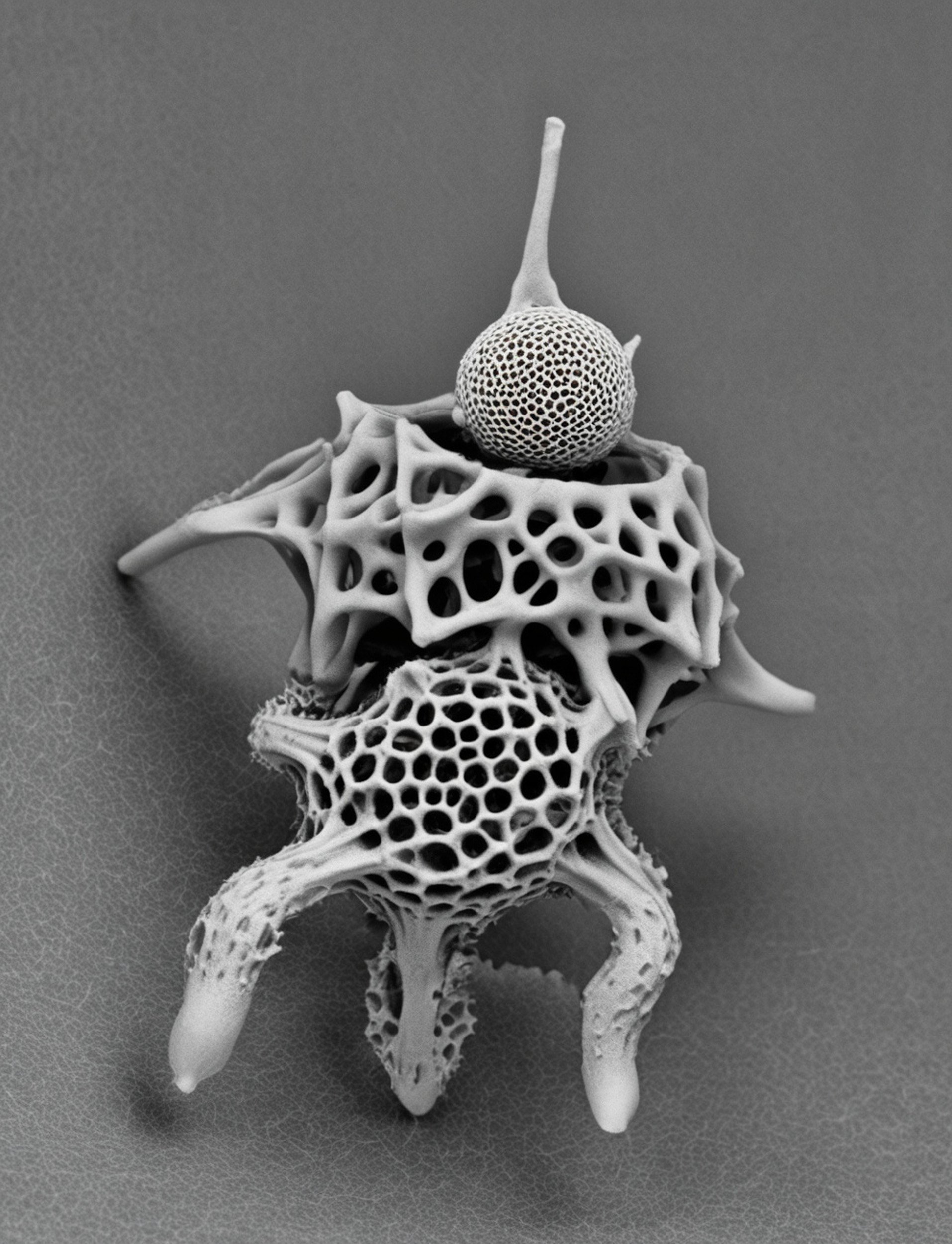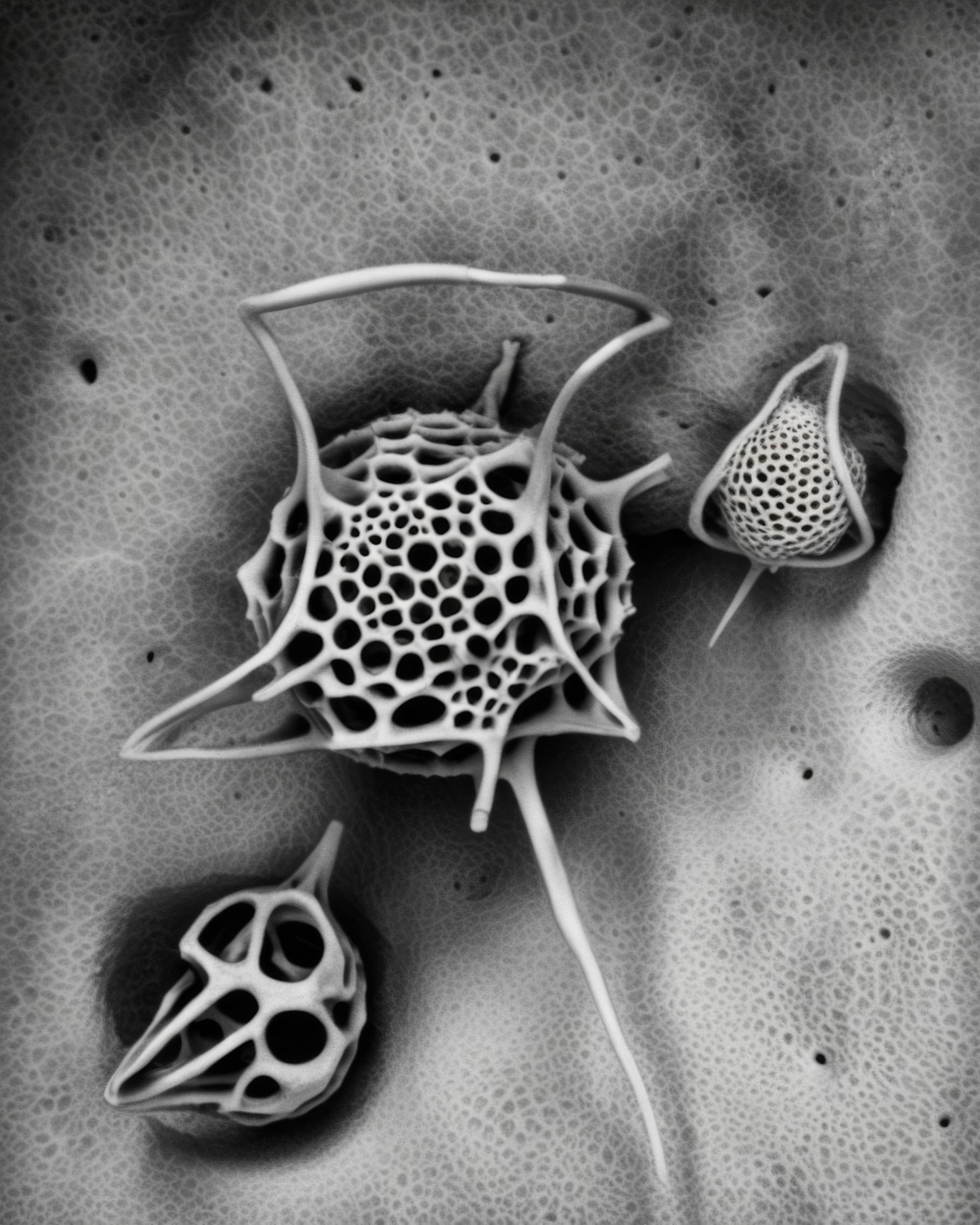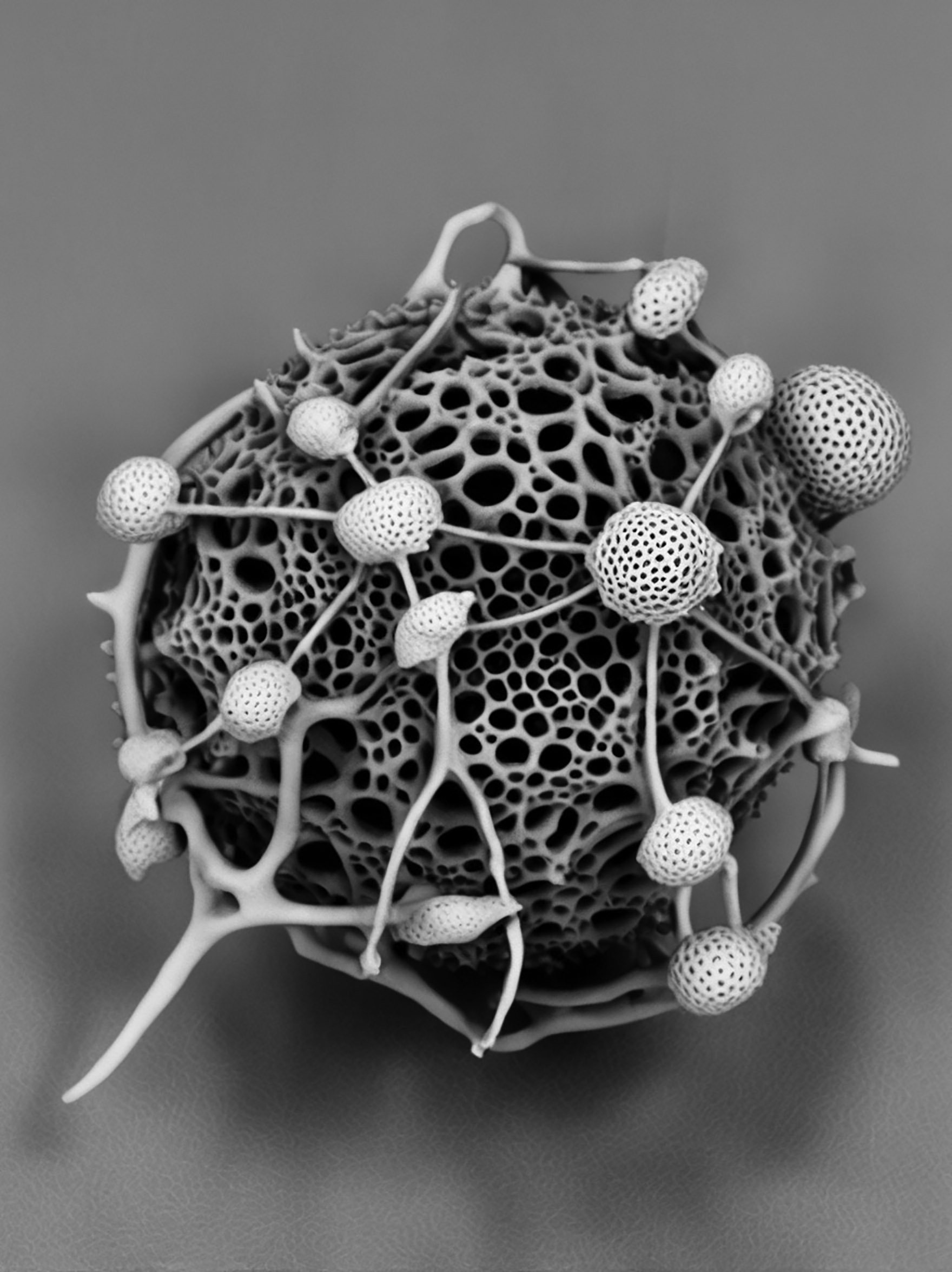
Nano Sketches
(2022-2024)
Nano Sketches is a collaborative project with my 8-year-old daughter, Juno, bridging vast scales of time and technology—from electron microscopy to children's marker drawings, and culminating in AI-driven interpretations.
In 2022, I gained access to the world’s smallest scanning electron microscope, a device originally designed for the International Space Station. This extraordinary tool allowed allowed me to capture the intricate mineral skeletons of radiolarians—ancient marine microplankton that have existed for over 550 million years, dating back to the origins of complex life on Earth. Observing these specimens at 2500x magnification, within an extreme vacuum where electrons trace paths across silver-coated samples, I felt felt like I was discovering ancient aliens.








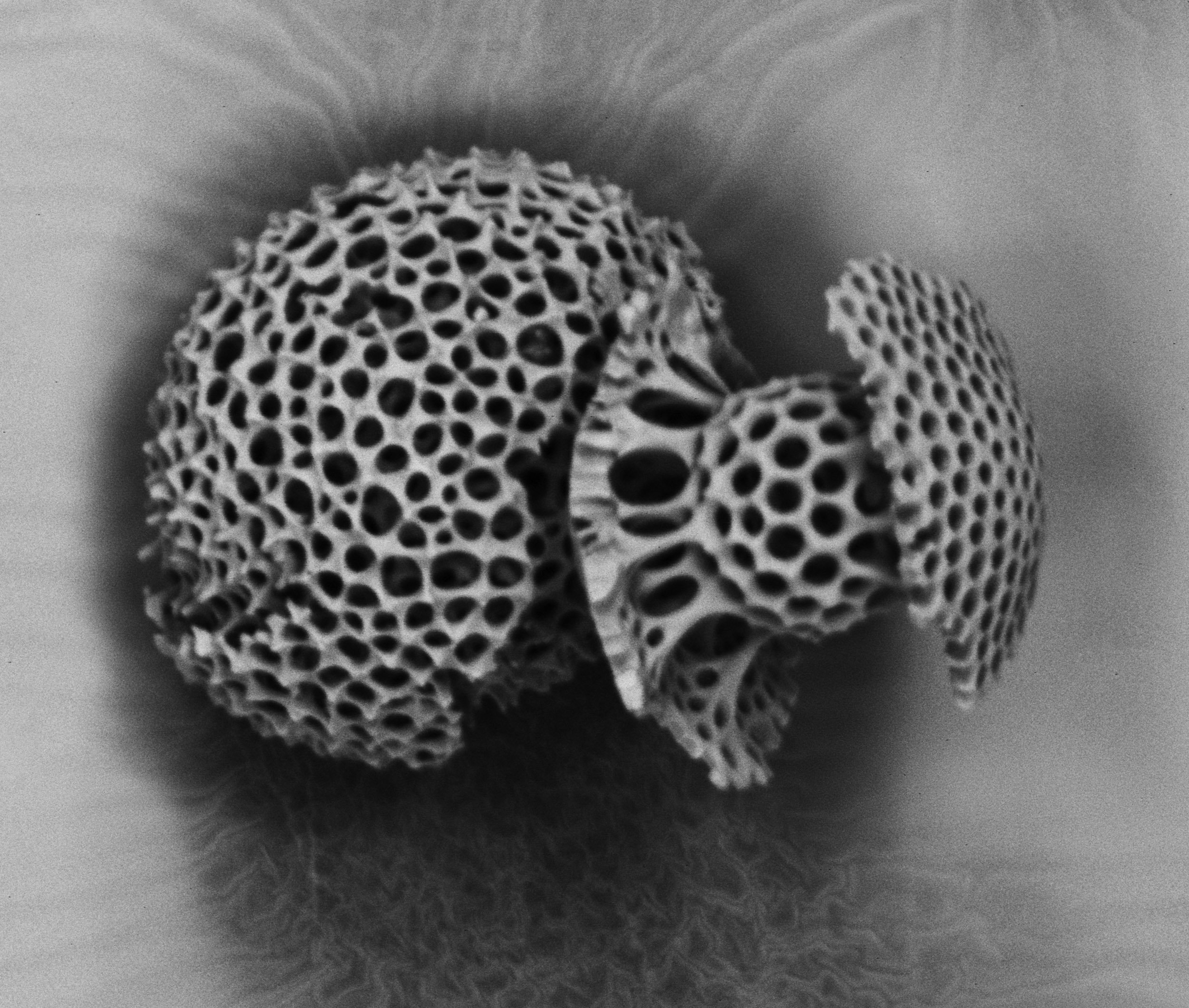







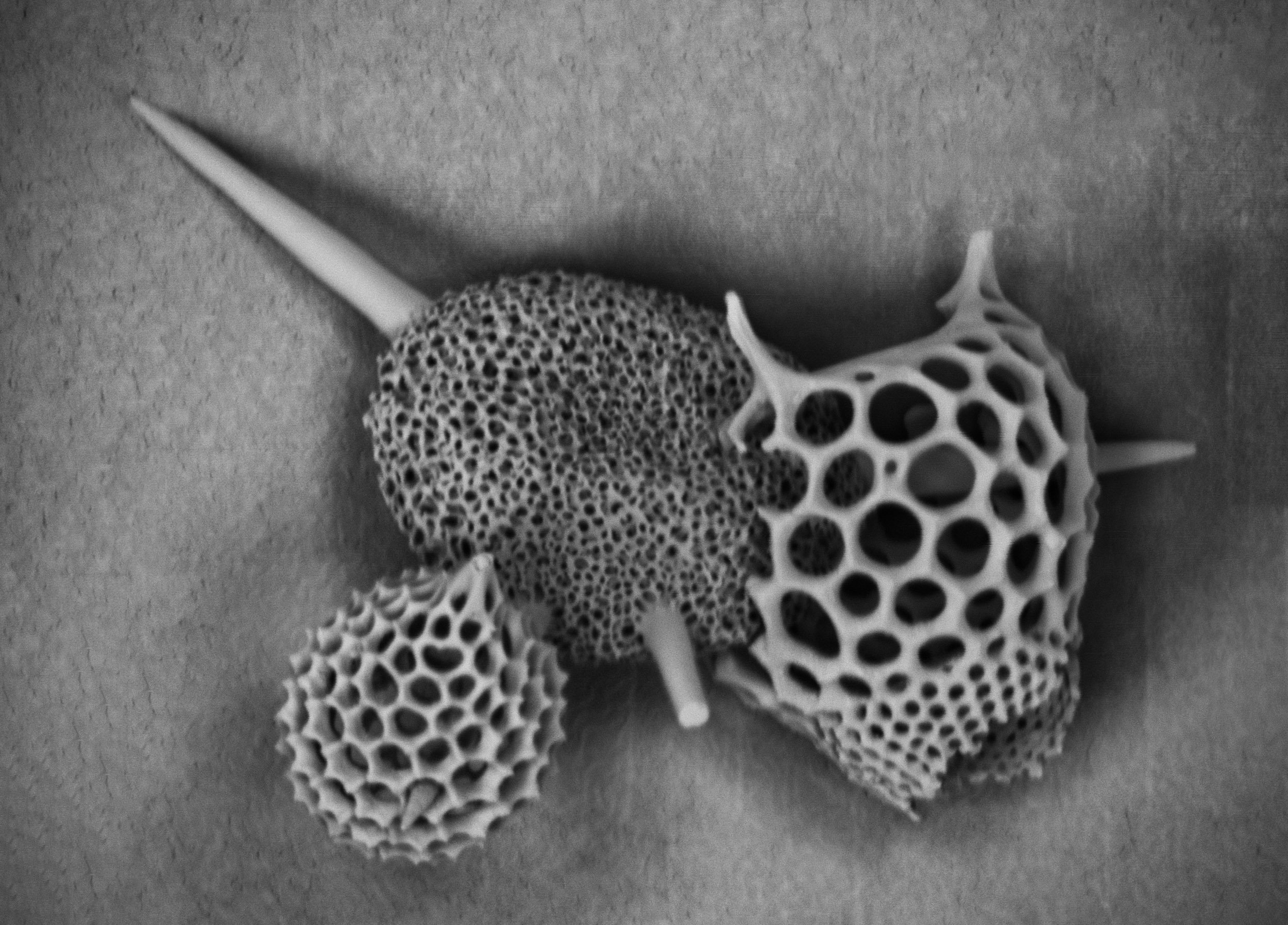





Over hundreds of hours, searching and scanning tens of thousands of samples, I was drawn to the occasional groupings of skeletons locked in a death embrace, caught in a dance, pierced by each other, snagged and trapped in passing, or nestled inside one another. Each final image of one of these groupings is a composite, assembled from between 10-80 individual scans made in a grid, as the device was made for extreme compact portability, not high resolution photographic outputs. The final results are photographs that often feels like a century-old exposure on grainy film or paper, though it was born of electrons and sensors and no light at all.
Photographing these radiolarians was more than a glimpse into Earth's ancient history; it was a window into deep time, allowing me to witness the evolution and continuity of life, spanning from the Cambrian Explosion to the inevitable rise and fall of all empires and nearly all species. Their near-invisible smallness and unfathomably long timeline reduced human scale and story to insignificance within the vastness of the cosmos. A unique archive of imagery was created from this time, but it had not found its final form or role yet.
The project took a new shape a year later, when it became a collaboration with my 8-year-old daughter, Juno Huey, as her interpretations of radiolarians began to appear in our home as thick sharpie drawings on paper. Inspired by the forms in my photos she drew her own radiolarians, but also the shapes in drawings by Joan Miró, who she was studying in 3rd grade art class, breathing new life into these ancient aliens.






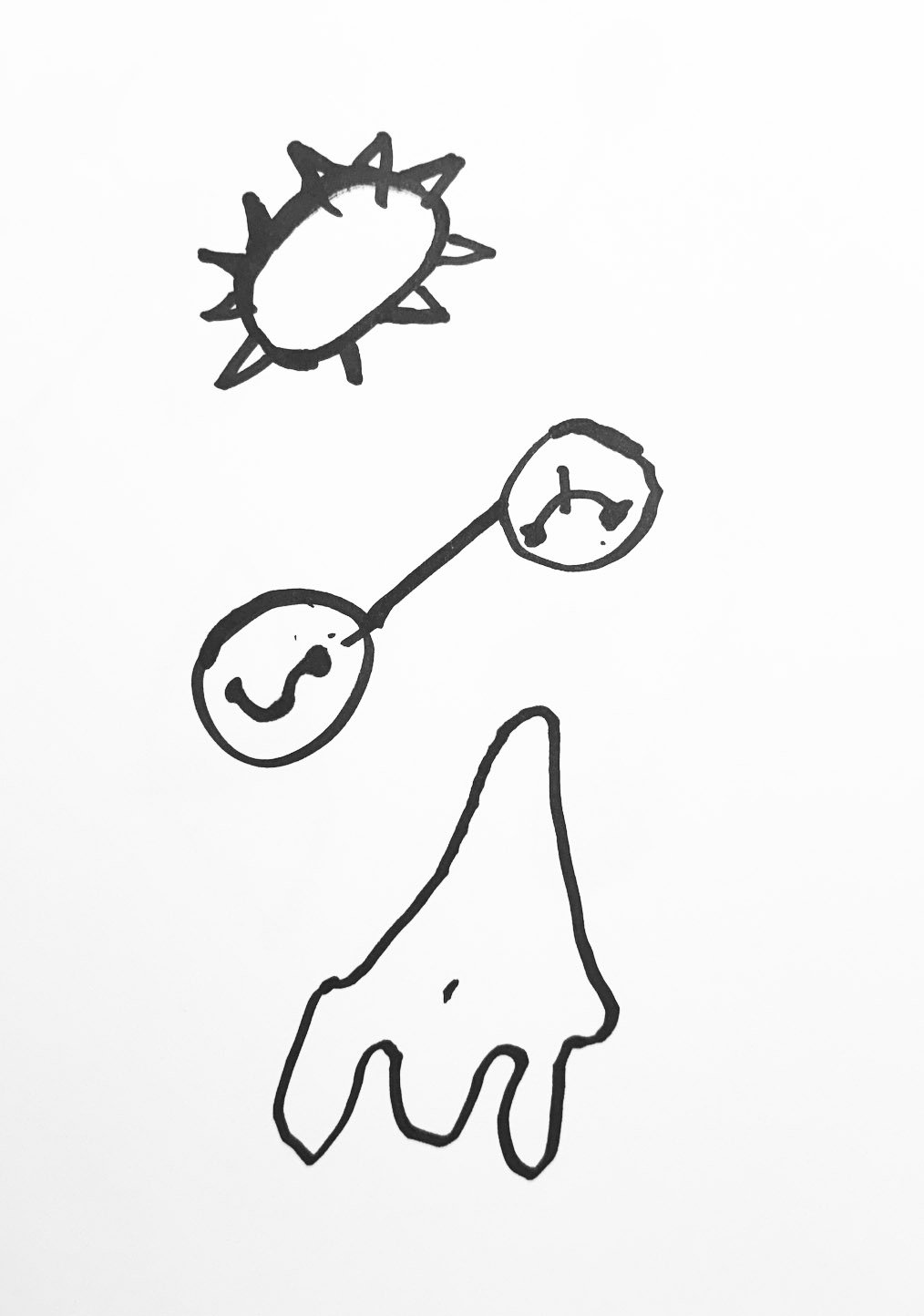

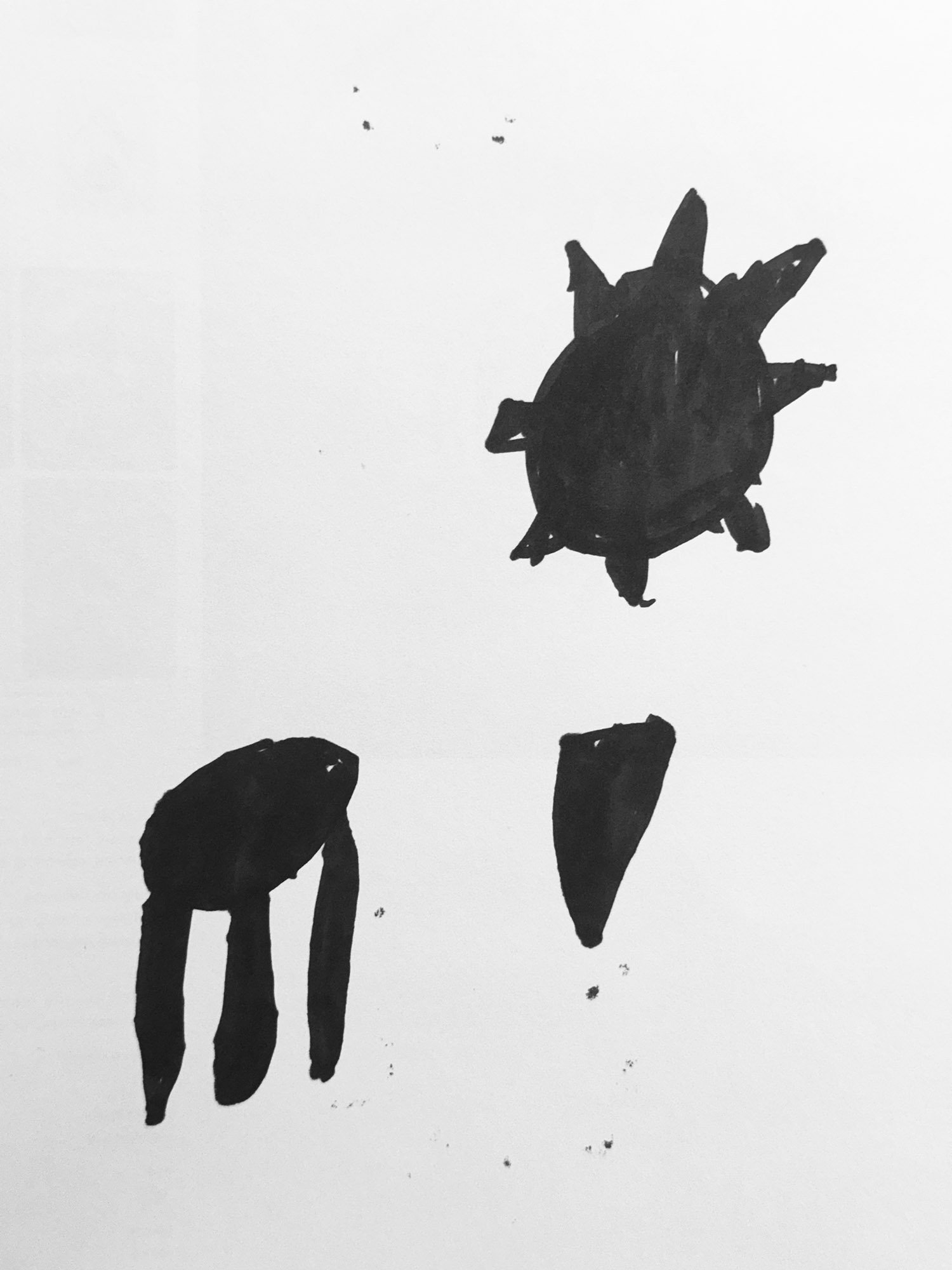



As soon as I saw Juno's drawing, I also saw a way to join her, to create a dialogue between the ultra-precise world of my electron microscopy and the gestural freedom of her drawings. To bridge these worlds of paper and ink and electrons, I created a bespoke AI image generator - a concept trainer utilizing a custom LoRA (Low-Rank Adaptation) model. Trained on my radiolarian image archive, this tool reinterprets Juno's drawings, wrapping and transforming her sketches with the photographic attributes of the radiolarians while preserving both the visual signature of my photographs and the essence of her own creativity. In our collaboration, these radiolarians shed their static existence as relics, becoming dynamic players in a visual dialogue that spans 550 million years. This work that began as my own meditation on the vast scales of time and space, connecting the infinitesimally small with the expanses of the universe, and annihilation of human scale and story, found its anchor in the simple act and object of a child’s drawing.
Juno's sketches, created in the perfect present, ground the project in the immediate and tangible. They serve as a counterpoint to the abstract enormity of deep time, offering a human touch that makes the incomprehensible somehow accessible. In doing so, they each create a moment where the universe itself seems to expand and contract in response to her imagination, and reacting to her every mark, reminding us that even as we grapple with our cosmic insignificance, we can find profound meaning in the simplest human connections.








